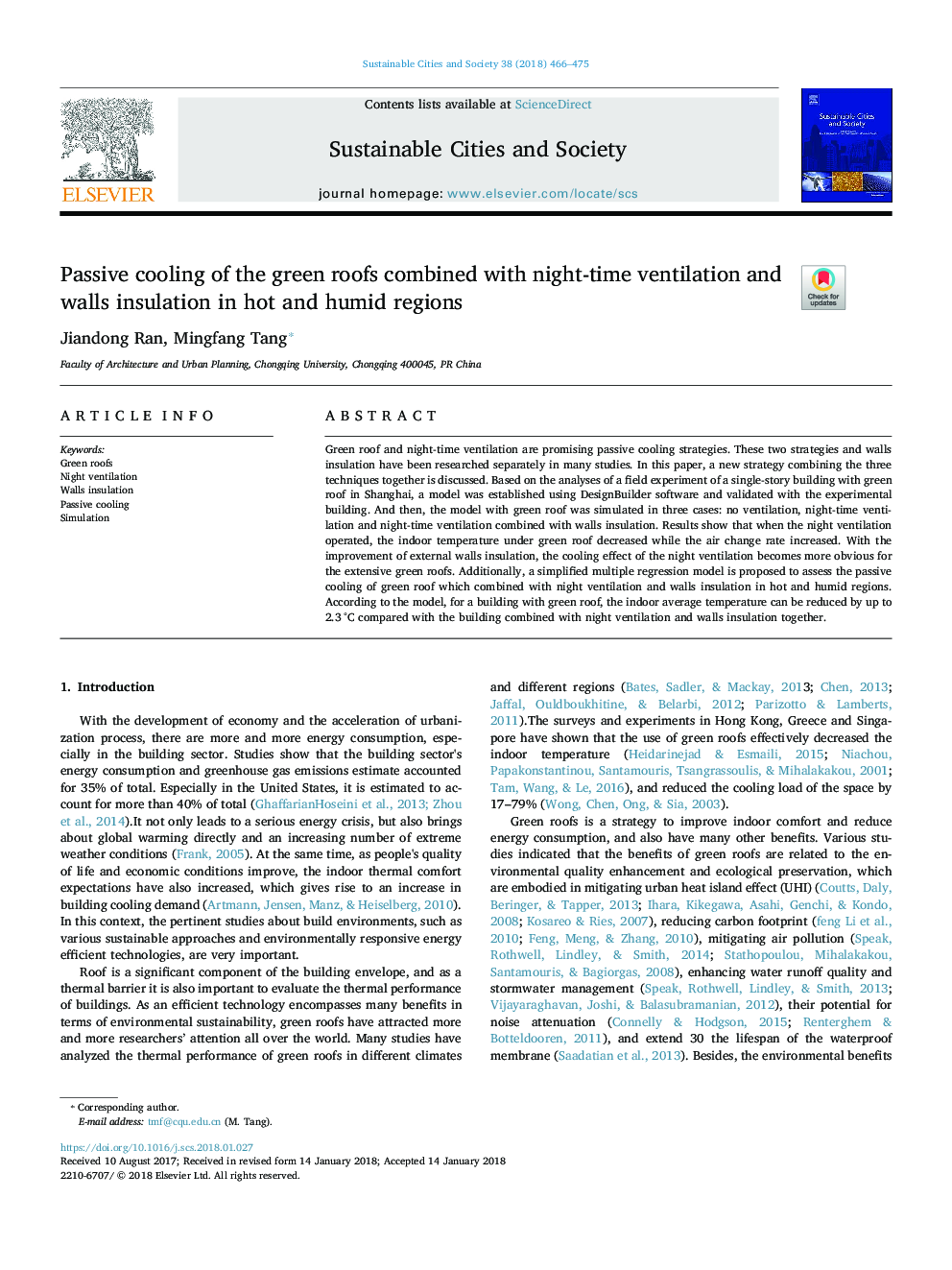| Article ID | Journal | Published Year | Pages | File Type |
|---|---|---|---|---|
| 6775710 | Sustainable Cities and Society | 2018 | 10 Pages |
Abstract
Green roof and night-time ventilation are promising passive cooling strategies. These two strategies and walls insulation have been researched separately in many studies. In this paper, a new strategy combining the three techniques together is discussed. Based on the analyses of a field experiment of a single-story building with green roof in Shanghai, a model was established using DesignBuilder software and validated with the experimental building. And then, the model with green roof was simulated in three cases: no ventilation, night-time ventilation and night-time ventilation combined with walls insulation. Results show that when the night ventilation operated, the indoor temperature under green roof decreased while the air change rate increased. With the improvement of external walls insulation, the cooling effect of the night ventilation becomes more obvious for the extensive green roofs. Additionally, a simplified multiple regression model is proposed to assess the passive cooling of green roof which combined with night ventilation and walls insulation in hot and humid regions. According to the model, for a building with green roof, the indoor average temperature can be reduced by up to 2.3â¯Â°C compared with the building combined with night ventilation and walls insulation together.
Related Topics
Physical Sciences and Engineering
Energy
Renewable Energy, Sustainability and the Environment
Authors
Jiandong Ran, Mingfang Tang,
